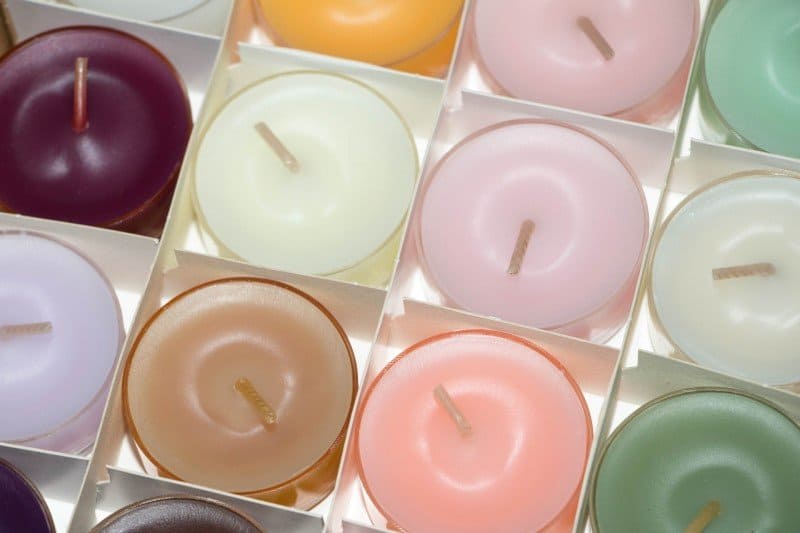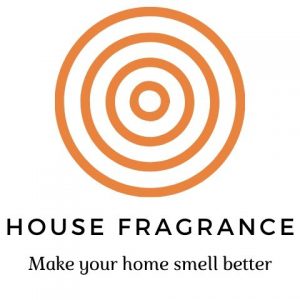Candles have been used for light since ancient times. As a matter of fact, prior to the invention of electricity in 1879, candles were the only source of light that people had.
As electricity began to take over the world as the primary source of light, candles became more of a decorative item, providing a particular mood for family gatherings and celebrations or adding fragrance to homes.
With the changes in the candle-making industry, there is great diversity in the products used both to make the candle and create the fragrance. This leaves people asking the question “What is the healthiest candle to burn?”
The healthiest candles have a low negative impact on your home’s environment and are 100 percent soy-, vegetable-, or beeswax-based. Their wicks should be made with cotton and a cellulose core and their fragrance should be 100 percent essential oils.
Candles that are made from paraffin with chemical fragrances release toxins into your home and reduce the air quality. Unfortunately, many candles today are made with these substances so it is important to know what you are buying.
For most people, candles help to create a peaceful and calming environment and the fragrances can enhance the mood. As with most products, the advances in manufacturing led to the ability to mass-produce popular items at a lower cost; with candles, the price is air quality in your home.
It is important to understand how these developments have changed the candle-making industry and how you can find the healthiest candles to burn in your home.
Here I choose some high-quality candles for you:

A Brief History of Candle-Making
In ancient times, candles were made with materials found in the environment. The Romans made candles with tallow or animal fat. There is evidence that the Chinese made candles from whale fat and in India, they made wax from boiling cinnamon.
In the Middle Ages, beeswax was discovered as a source of wax that didn’t have a foul odor. This was a huge improvement but it was very expensive.
After the Industrial Revolution, people began making candles out of paraffin. They discovered that when they distilled crude petroleum, paraffin was the byproduct.
The problem is that burning paraffin candles, which is still in practice today, leads to air pollution. In addition, many candles have wicks made of potentially toxic metals and are scented with chemical fragrances.
Without realizing it, many people are adding to the harmful toxins they take in, sometimes on a daily basis. Fortunately, there are still good candles out there as long as you know what you are looking for.
What Makes a Healthy Candle?
What you are looking for is a candle that reduces the number of toxins and pollutants that it releases into the environment. The three things to look at are the wax, the wick, and the scent. Here is what you need to consider:
- Wax: Always look for soy or beeswax candles.
- Wick: The wick should be cotton with a cellulose core.
- Scent: The candle should only contain 100 percent plant-based all-natural essential oils.
Beeswax is great because it burns cleanly and is almost smoke-free. It doesn’t leave soot behind and it burns slowly. In addition, it doesn’t drip, and it has a honey fragrance. In addition, soy is a clean-burning candle as long as you make sure that it is 100 percent soy.
Essential Oils Vs. Synthetic Fragrances
Essential oils are a healthy alternative for scenting candles. Many candles contain synthetic fragrances that release chemicals into the air while the candle is burning.
These chemicals pollute the air and they can exacerbate allergies and asthma symptoms in people. This is the main reason to make sure that your candles use only all-natural essential oils.
Essential oils are natural products that are extracted from plants. These oils are found in the stem, roots, fruits, flowers, or seeds of plants. There are many different fragrances — literally as many fragrances as there are plants.
The oils can be extracted from plants in different ways and, oddly enough, two different oils extracted in different ways from the same plant can produce two different scents.
Interestingly, essential oils do more than emit a nice fragrance. They actually have healing properties as well. Plants use these oils to control infections and humidity, heal wounds, and attract or repel animals, birds, and insects.
They do not feel oily but rather they contain chemicals from plants that are oil-soluble. Overall, they bring a lot more benefits to the candles than simply the scent.
The Wick Makes a Difference
As stated above, make sure that your candle has a cotton wick. For a long time, metal wicks were able to hold the wick in place as the wax around them melted. During the Industrial Revolution, when candles were mass-produced for the first time, the metal wicks were a big part of the process.
Although the candle manufacturing businesses in the United States agreed to stop using lead in candle wicks, some still do today. Lead is a known toxin so you need to avoid any candles that have any traces of it in the wick.

What’s in the Wax?
1. Paraffin
As stated above, avoid paraffin altogether. This substance burns and lets off smoke and soot. It is known to be one of the largest sources of indoor air pollution.
In addition, some candle manufacturers only mention one of the products that makes the wax. You really need to make sure that you are not getting a paraffin candle.
Sometimes other ingredients are added for various reasons including color, stability, fragrance, or to change the way it burns.
2. Beeswax
Beeswax is all-natural, and it does not produce toxins or soot when it is burned. Many people enjoy using beeswax because of its health benefits. Take a look at the following:
- Lower toxicity
- Ability to neutralize pollutants in the air: Beeswax releases negative ions that help to get rid of mold, dust and other pollutants in the air.
- Ability to help people relax: The scent is sweet and aids in relaxation.
- No drips: This makes them more safe.
- Bright, pure light
Check this out: Best Beeswax Candles.
3. Soy wax
Soy candles are made from soy wax and soy wax is made from soybean oil. These candles melt more quickly than other types and they usually come in a container.
Sometimes soy candles have additives because this can help to raise the melting point and make the candle harder. The problem is that soy candles are healthy but they need to be 100 percent pure.
Soy wax can be mixed with beeswax, which is still fine, but you need to make sure that it isn’t mixed with paraffin or another chemically processed product or the health benefits disappear.
3. Uncontaminated Vegetable Oils
Vegetable oils such as palm wax or coconut wax can be combined with essential oils to make fragrant candles. They are a renewable resource and they have no petroleum or harmful toxins in them.
These candles are fairly new. As people are trying harder to reduce the effects of harmful pollutants and toxins in the environment, new products such as these are hitting the markets.
How to Know What Is in the Candle
The problem is that sometimes you can’t. Some candles aren’t marked. If the candle doesn’t have a clear label with a list of ingredients, then you should consider a different candle.
Stay away from blends. If it is soy, it should say 100% soy. Avoid paraffin and choose 100% soy or vegetable-based wax or beeswax.
The wick should be cotton. It should also be the right length for the candle. Zinc and tin cores have been tested to be safe but a cellulose core is best.
Try to avoid candles with fragrances that are synthetic and choose ones that use 100 percent essential oils. If the label is clear, you will know what is in the candle. If not, you should choose an alternative.
The biggest obstacle is that there is no law or requirement that candle makers disclose what is in their candles. A good rule of thumb is that if the candle isn’t marked “paraffin-free,” it likely contains it.
Final Thoughts
With all of the information out there about the environment and pollutants, it is important to keep the air quality in your home as clean as possible.
Although candles have been popular for creating ambiance and eliminating odors in homes for many years, it is important to look to healthy alternatives to traditional candle products.
There are options on the market that are a clean alternative. Beeswax is all-natural candle and it produces a calming scent of sweet honey.
You can also find candles made from soy or vegetable wax. Not only that, but essential oils make it possible to scent these healthier candles with many different scents and some have healing or relaxing properties as well.
If you don’t find the exact candle that you are looking for in the stores, it is fairly simple to make your own because vegetable oils and essential oils are easy to come by. You can find the ingredients that you need and custom-design your own fragrant creations.

